Archives of Past Exhibits:Nippon Gasket
2014 JSAE Automotive Engineering Exposition
Tokyo Motor Show 2013
Cylinder head gasket
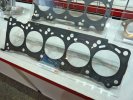 Installed vehicle: Toyota "Lexus LFA" -The Company estimates its market share of cylinder head gaskets in Japan is 40 percent.
Installed vehicle: Toyota "Lexus LFA" -The Company estimates its market share of cylinder head gaskets in Japan is 40 percent.
Pulp mold technology
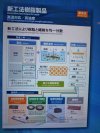 -Innovative technology developed by the Company -Process consists of mixing resin and aramid fiber in the water, dehydrating as in papermaking, and machining. This makes resin stick to the fiber. -Levels of sliding performances, sound absorbing properties, heat-resistance and insulating characteristics can be adjusted by changing the compounding ratio -Technology is used at the Shiga Plant
-Innovative technology developed by the Company -Process consists of mixing resin and aramid fiber in the water, dehydrating as in papermaking, and machining. This makes resin stick to the fiber. -Levels of sliding performances, sound absorbing properties, heat-resistance and insulating characteristics can be adjusted by changing the compounding ratio -Technology is used at the Shiga Plant 2011 JSAE Automotive Engineering Exposition
Tokyo Motor Show 2004
(Note: Taiho Kogyo is a major shareholder of Nippon Gasket)
- Cylinder head gaskets
- Exhaust manifold gaskets
- Air switching valve gaskets
- Turbine outlet elbow gaskets
- Turbo exhaust manifold gaskets
Product Features
1.Shim stopper gaskets (Installed in various mass production models)
- Simple and low cost single-layer type
- Distance between bores is adjustable (can be narrowed)
- Inner plate thickness change along the circumference makes the seal more reliable and reduces the deformation of the bore
- The volume in the combustion chamber is adjustable according to the thickness of the inner plate
2. Inner step stopper gaskets (Used for engines with press fitted cylinder liners)
- Prevent deformation of the the liner and damage to the gasket caused by excessive seal loads
- More flexible to cope with uneven liner thickness
- Improved sealing reliability by multiple sealing points (two points on the liner and one point on the block)
3.Loop stopper gaskets
Enhanced the functionality of the gasket by creating a gap at the tip of the company's proprietary loop stopper-type gaskets.
- More flexibly follow the movements of head and block surfaces
- Improved sealing reliability
- Reduce deformation of the bore
4. Interlayer seat gaskets (Used in aluminum open deck blocks)
- Higher tolerance to surface accuracy
- Reduce damage to aluminum heads and block surfaces
- Improved seal reliability by incorporating a wider sealing area
5. Step stopper gaskets
The company's new diverse step stopper gaskets based on simple substrate-integrated step stoppers, allow automakers to reduce costs and achieve higher performance of the engine.
- By fine tuning the constriction width according to the step height and changing the sloping angle along the circumferential part, the company achieved making the seal more reliable and reducing the deformation of the bore.
- Wider seal width on the block side increases the tolerance to surface accuracy and reduces the damage to the flange surface.
- Double layer gaskets paired with a hem-bending stopper or an interlayer sheet make optimized specifications possible that meet various requirements for engines.
- Reduced costs by partial coating on essential parts of seals in single-layer gaskets.

 AI Navigator
AI Navigator




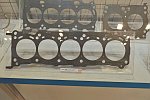

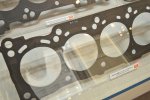
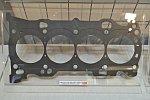
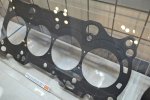
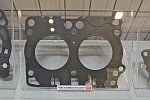
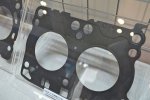
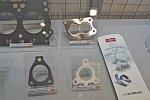
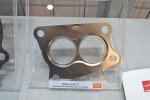
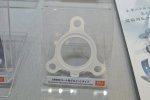
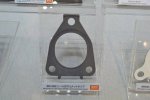
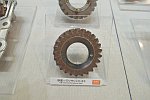
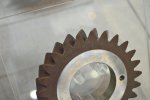
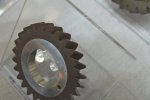
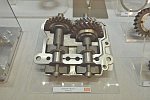
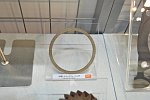
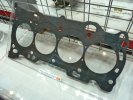
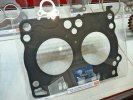
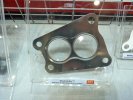
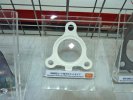
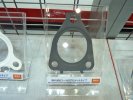
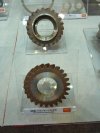
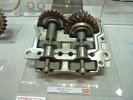
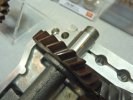
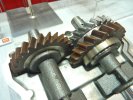
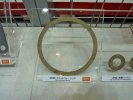
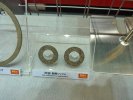
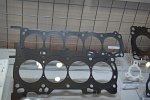
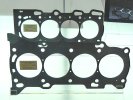
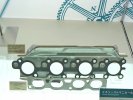
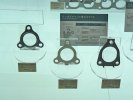
 Japan
Japan USA
USA Mexico
Mexico Germany
Germany China (Shanghai)
China (Shanghai) Thailand
Thailand India
India